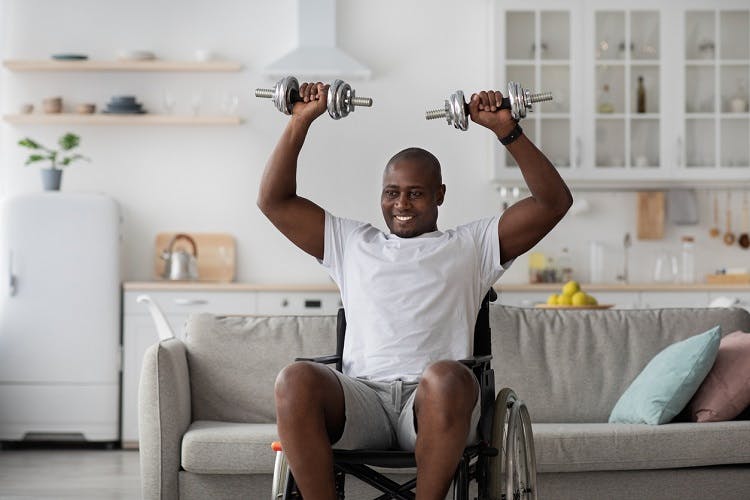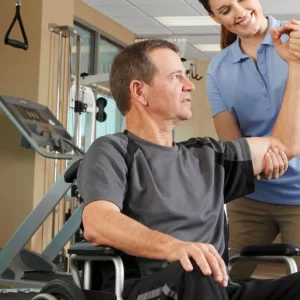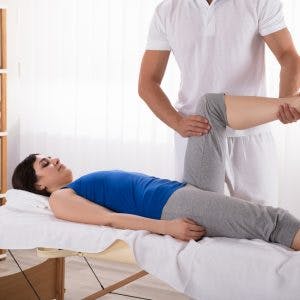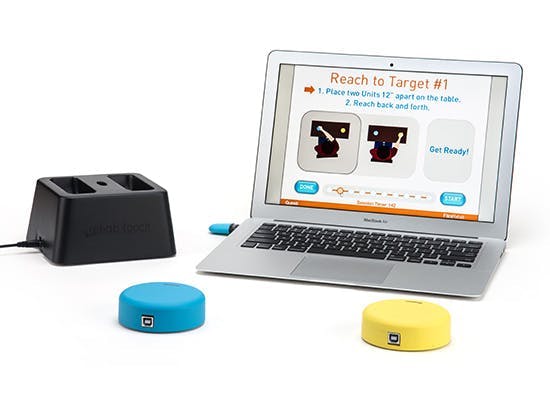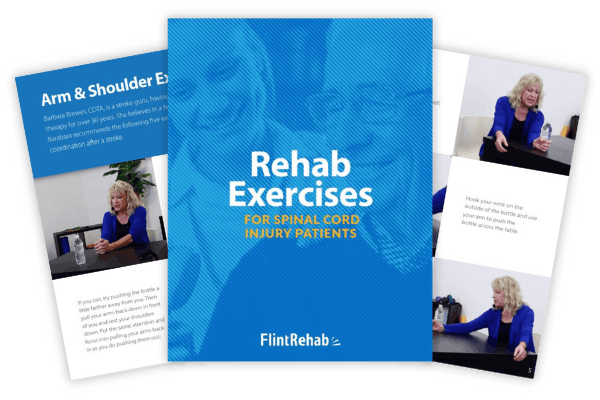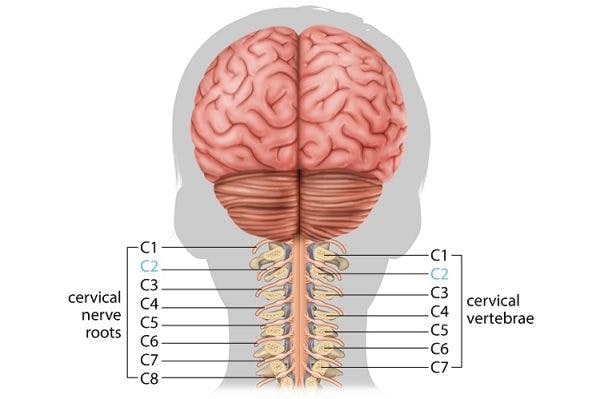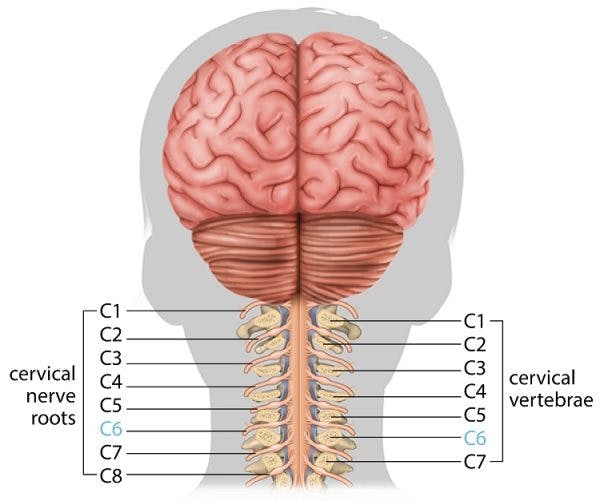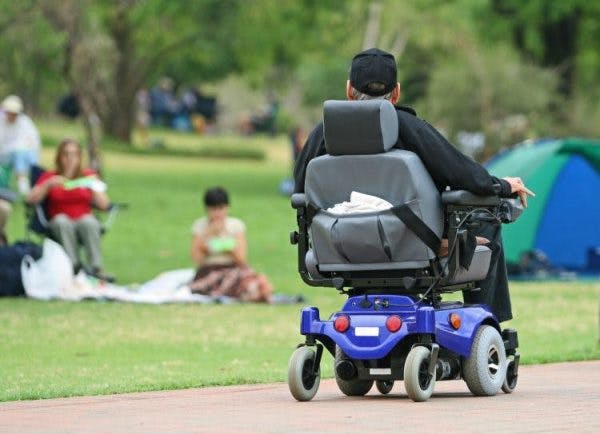When a spinal cord injury disrupts the transmission of signals between the brain and body, practicing spinal cord injury exercises may help restore this communication. Rehabilitation exercises are essential for activating neuroplasticity, which is the central nervous system’s ability to rewire itself and strengthen neural pathways.
When searching for spinal cord injury exercises to add to your home therapy regimen, it’s essential to find exercises most suitable to your level of ability. This article will discuss the benefits of spinal cord injury exercises and the various types you can use to promote recovery. Be sure to check with your therapist to make sure the exercises are safe for you.
Before diving in, let’s first go over the mechanisms behind spinal cord injury recovery.
Benefits of Exercise After Spinal Cord Injury
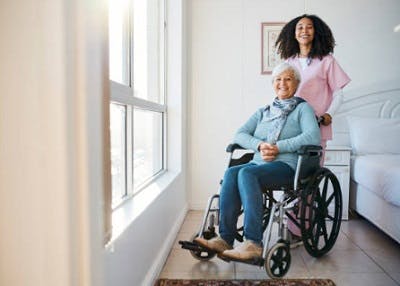
Every spinal cord injury is different, and the effects survivors may experience following their injury can vary widely. Depending on the level of injury and its severity, some survivors have only minor movement and/or sensation deficits, while others have more severe, lasting damage.
The spinal cord is capable of rewiring itself and adapting through the process of neuroplasticity, as long as some connections in the spinal cord remain intact. Therefore, in survivors with incomplete spinal cord injuries, neuroplasticity can allow existing spared neural pathways to become stronger and learn new functions. Thus, the more spared neural pathways, the higher the chances of recovery.
Of note, as there are no intact neural connections at the level of injury after a complete spinal cord injury, traditional treatments and exercises cannot enhance lost movement or sensation. However, researchers are continually studying innovative ways to promote functional improvements, such as stem cell therapy. Furthermore, some functional recovery using compensatory strategies can still be achieved.
When there are existing neural connections at the level of injury, neuroplasticity is best activated through high repetition exercises, or massed practice. Consistently practicing tasks involving movement of the affected muscles and stimulation of areas with altered sensation helps to stimulate the spinal cord and promote neurological adaptations.. Spinal cord injury exercises may also have other benefits, such as relieving spasticity (involuntary muscle tightness),improving blood flow, and reducing the risk of pressure sores, even in those with complete spinal cord injuries. The more frequently you engage in spinal cord injury exercises, the greater your chances of improving mobility and function.
Passive Spinal Cord Injury Exercises
While every spinal cord injury has different functional outcomes, most spinal cord injury survivors can practice passive range of motion exercises. These are essential for maintaining and improving mobility, reducing spasticity, enhancing blood flow, and preventing pressure ulcers.
Passive range of motion exercises can be especially beneficial for individuals with severe weakness or paralysis, as they do not require the survivor to exert a lot of energy. Instead, a therapist or caregiver moves the survivor’s body for them.
Those who have more control of their movements should try to actively perform range of motion exercises, using their own strength as much as they can. For those with limited movement, mental practice (visualizing yourself moving independently) can also help promote neuroplasticity. It is recommended to practice passive range of motion exercises at least once per day to minimize stiffness and stimulate the nervous system.
Here is a video with examples of various SCI passive range of motion exercises you can try with a therapist and/or caregiver. Be mindful of doing these exercises on your own if you are still building up strength to avoid overworking yourself.
Shoulder Flexion
Begin with your arm relaxed at your side. Have a therapist or trained caregiver raise your arm out in front of you, reaching as high as possible without pain. Try to keep your shoulder from shrugging upward and keep the rest of your body aligned. Then your therapist or caregiver can support your arm as it comes back down to your side, and repeat.
Elbow Flexion and Extension
Starting with your arm relaxed and your hand facing your side, have a therapist or trained caregiver gently bend your elbow, rotating your forearm so your hand turns toward your shoulder. Bend your elbow as much as possible without pain. Then relax your arm and repeat. This exercise also includes elbow extension, supination, and pronation.
Knee Extension
While sitting, have a therapist or trained caregiver slowly move your leg upwards until your knee is nearly straight. Gently bring your legs back down into your starting position, and repeat. If you are able to actively help with this motion, you should feel the muscles on the front of your thighs engage when doing this exercise.
Ankle Dorsiflexion
Starting in a seated or laying position, have a therapist or trained caregiver raise your toes up toward your calf, then relax back to a neutral position. Again, stop if you feel any pain.
Wrist Flexion and Extension
Start by stablizing the foream. Then, with your free hand bend the wrist forward and back promoting a gentle stretch without too much pressure. If you feel any pain or discomfort you can ease back on the exercise.
These exercises are primarily intended to be used on tight, weak, or immobile areas of the body. While some individuals may experience full-body paralysis, others may only need to focus on passively moving the lower body. It is often recommended to practice approximately 10 repetitions of each applicable exercise, while holding the stretch for 5-10 seconds before relaxing and repeating.
Range of motion exercises should not be painful. Depending on your sensation, some individuals may feel their muscles stretching. However, it is important to never push to the point of pain.
As you begin to recover, try to move through these motions with less help from your therapist or caregiver. If you improve and are able to complete these exercises actively but tire quickly, take a break or ask your therapist or caregiver to take over for the remainder of the range of motion exercises. Your endurance should also improve over time with more consistent practice. Talk with your therapist for more personalized recommendations.
Lower Extremity Spinal Cord Injury Exercises
There are various exercises you can do to strengthen the muscles in your legs and improve mobility. Additionally, SCI leg exercises help reduce muscle atrophy, improve circulation, and stimulate adaptive changes in the spinal cord.
However, before engaging in leg exercises for SCI, it’s important to warm up and stretch. The following video demonstrates various leg stretches you can try using a strap, resistance band, or large towel.
Spinal cord injury can also affect the ability to feel, therefore survivors need to be extra careful and pull gently when stretching to avoid injury.
Once you’re warmed up, try these helpful leg exercises for spinal cord injury:
Ankle Pumps
While also laying down, you can point your toes down so that the ankle is extended. Then raise your feet upwards towards the knees to flex the ankles. This exercise mimics the motions the ankles create when walking.
Knees to Chest
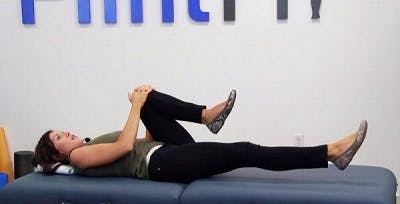
Place one hand on the upper leg just above your knee and the opposite foot. Bend one knee in so that it’s reaching towards your chest. Then bring your foot down and straighten the knee.
Straight Leg Lifts
Lay down with your legs straightened and lift one leg without bending at the knees. When the leg is as high as it can go, hold for a few seconds. Bring the leg back down and alternate with the other leg. Try to engage your core while doing this exercise to avoid putting undue stress on the lower back.
Seated Marching
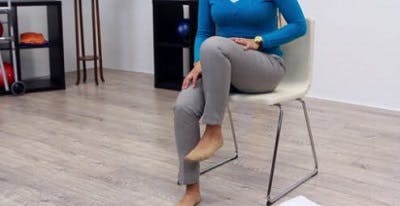
Sit at the edge of your seat with both feet on the ground, then alternate lifting your knees one at a time. This leg exercise allows survivors to practice movements used while walking without added pressure on their joints.
Discover more leg exercises for spinal cord injury patients »
Upper Extremity Spinal Cord Injury Exercises
Spinal cord injury survivors with cervical or high thoracic level injuries may often experience weakness in the hands. Fortunately, various hand and arm exercises can help improve fine motor skills and reduce weakness after spinal cord injury.
Since activities for spinal cord injury patients are often more engaging than rote exercises, many individuals find that they are more motivated to practice them. Therefore, using activities can encourage individuals to practice more frequently and repetitive practice is essential for adaptive rewiring through neuroplasticity, consistently practicing activities can also lead to functional improvements.
Here are some upper extremity spinal cord injury exercises you can try:
Therapy Putty
Squeezing, molding, and stretching therapy putty can improve strength and coordination of the hands. Different resistances are available to match your current ability level.
Fine Motor Games
Games such as Mancala or Connect 4, which involve manipulating small objects, can improve hand mobility, dexterity, and coordination. This can be critical for individuals experiencing weakness in their hands.
Placing Objects in Overhead Cupboards
Grasping objects of different weights and sizes, such as cups, towels, or canned foods, can improve fine motor coordination and strength. Lifting these objects to an overhead cupboard can also enhance shoulder strength and mobility.
Self-Care Tasks
Practicing tasks such as getting dressed, buttoning buttons, or preparing food can improve fine motor manipulation skills and upper body mobility. These tasks can be easily integrated into your daily routine for consistent practice.
Tactile Stimulation
Rub various textured objects, such as a cotton ball, sheet, or towel, along your arm and hand. This tactile input stimulates touch receptors, encouraging improved sensation. Avoid anything abrasive, and ensure no irritation or redness occurs, particularly if you have severe sensation impairments.
Making O’s and Fists

Using one or both hands, alternate tapping the tips of each finger to the thumb. After touching each finger, you can also add closing the hand into a fist. Hold a few seconds or as long as you can and straighten the fingers back out.
Gamified Neurorehabilitation devices, such as the MusicGlove
While there are many neurorehabilitation devices available, the MusicGlove is a hand therapy device that combines music, gaming, and hand therapy exercises to help you stay engaged and practice high repetitions from the comfort of your own home. MusicGlove has been clinically proven to boost hand function in just 2 weeks!
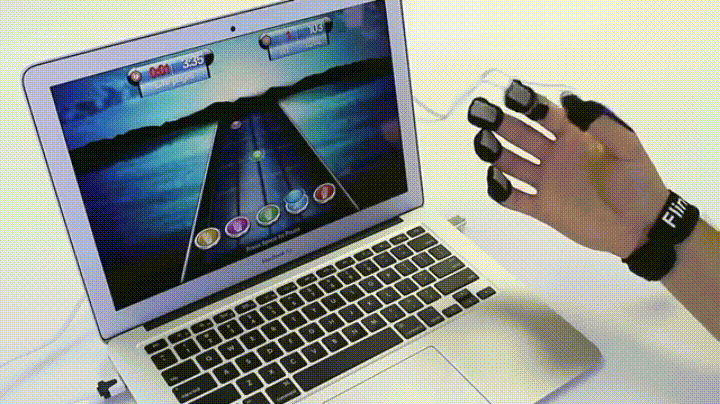
While these hand therapy exercises may seem simple, they are extremely effective. However, practicing the same movements can get boring and cause you to lose motivation. To help keep you motivated and engaged you can use gamified neurorehabilitation devices.
For example, MusicGlove is a hand therapy device that combines music, gaming, and hand therapy exercises to help you stay engaged and practice high repetitions from the comfort of your own home. MusicGlove has been clinically proven to boost hand function in just 2 weeks!
Discover more hand therapy exercises for spinal cord injury patients »
Spinal Cord Injury Exercises for the Core
Core exercises after spinal cord injury are also essential because they help stabilize the trunk for better balance and posture.
The following video will guide you through some wheelchair-friendly exercises to strengthen the core. Before practicing these exercises, always check that the brakes on your wheelchair are set.
Speak with your therapist before engaging in some of these core exercises if you still have spinal precautions, or have certain movements that need to be avoided after your SCI.
Back Extensor Isometric Hold
Sit at the edge of your seat and lean back, pushing gently against the back of your chair. Hold for a few seconds or as long as you can, then use your core muscles to sit up straight again.
Seated Trunk Extension
While sitting in a chair, slowly lean forward as far as you comfortably can and try reaching your hands to the floor. Then, use your back muscles to slowly sit back up. If you have trouble with your sitting balance, be sure to have someone nearby to spot you during this exercise.
Trunk Rotation
Start by laying down and keep your knees bent and feet flat on the floor. Try to keep your shoulders and upper body firmly on the floor. Tighten the abdominal muscles and slowly relax the knees down toward the floor on one side of your body, then use your core to bring the knees back to center before relaxing toward the other side.
As your core strength improves, therapists may recommend trying more challenging exercises, such as sitting on an exercise ball or carefully holding specific yoga poses. For safety, talk with a therapist before completing these types of exercises and ensure you have a spotter nearby.
Discover more core strengthening exercises for spinal cord injury patients»
Engaging in Spinal Cord Injury Exercises
The best way to improve mobility after SCI is to consistently practice spinal cord injury exercises. This helps stimulate neuroplasticity in undamaged regions of the spinal cord and strengthen the pathways that control movement.
Every spinal cord injury is different and every survivor will have different functional outcomes so try not to feel discouraged if an exercise is too difficult. A therapist can help you adjust and provide SCI exercises for your specific needs and abilities.
We hope this article has inspired you to engage in spinal cord injury exercises to promote recovery.
